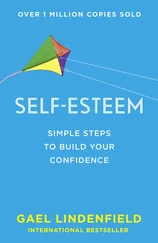The starting point for creating your network is simple, as we said earlier: to list everyone you know. Set yourself a target. If you can get to between 150 and 200 people in your first draft, then you’re well on your way! Don’t worry if it feels like a bit of a ‘stretch’ to include some of the names in your network; you can always prune it later. You may find the following list helpful to get you started:
Family
Friends
Friends of friends
People you have worked with in the past
People you work with now
People your partner knows
Neighbours
People you know from your hobbies or sporting activities
Customers you have had a good experience with
People you know through voluntary work
People who have supplied services to you or your workplace
Old school or university friends
When you’ve made your list, the next stage is to contact each person to let them know that you’re looking for the next opportunity to further your career. Some people find it helpful to write out a script in advance of a telephone call; in any event, whatever means of communication you choose, be clear about the following:
How you come to be contacting this person; in other words, how you got their name (unless this is obvious).
A very brief summary of why and how this person may be able to help you. Note, asking them directly for a job is not a good idea; it’s too blunt and may make them feel they have been put on the spot. It’s far better to ask if they know of one, or to ask for any advice they can give as to how to find one, or if they know of someone else who could help.
Your current situation and what, precisely, you’re looking for.
It’s important to bear in mind that if they have no advice to give or haven’t heard of a specific opportunity, this is far from a wasted effort! By contacting them, you have planted a seed that may come to fruition many months down the line, and you have also reminded them of who you are, which makes it more likely that they’ll think of you should a suitable opportunity arise.
Many people find using some form of social media helpful in developing and maintaining contacts and networks and becoming alert to job opportunities. In fact, nowadays it’s fair to say that it’s become essential. Like any system, however, it’s only as good as the data you put into it and the particular methods or sites that you use. And remember – it’s only a tool and is only part of the process. Many people fall into the trap of thinking that having a LinkedIn® page (a great idea), and connecting with people on it, is the same thing as networking. Having a presence on sites such as LinkedIn® has several benefits:
They help you keep track of your contacts and of their contact details.
They help you keep up to date with what your contacts are doing.
They enable you to post a brief summary of your work experience, key skills and attributes all in one place, and in a place that you can easily keep up to date.
You can post messages about what you’re doing and what you’re looking for.
You can receive and read messages from others.
It doesn’t cost anything!
You can use social media to your advantage in other ways, too. If you have a Twitter or Facebook account, follow or connect with the organisations you’re either applying to join or would be interested in joining; you’ll get a feel for the organisation’s style and key issues and concerns, and it’s a way of demonstrating enthusiasm, creative thinking and a degree of understanding of how the digital world works. It may be of benefit to start your own blog – maybe about your job search itself. Bloggers are the internet’s thought leaders, and you can link your blog to your profiles on LinkedIn® and Facebook. This would then, for example, go out to your connections on the weekly update email. If you search or connect with companies you’re interested in, you can look for employees of that company who are connected to those in your own network. You could then ask your connections for a connect request with those people you have identified.
A couple of other tips:
Regularly update your status to inform your connections across all social media of any relevant activities, such as training, achievements, articles you’ve read, book reviews. It will help them remain aware of your job search and interests.
Similarly, post regular updates on your progress on all your social media sites; you may want to update your contacts on what you’re looking for, interviews you’ve attended, people you’ve met.
A word of warning, however: be very careful about what you post on social networking sites. There have been cases where individuals have had to resign over inappropriate postings on social media sites. Many employers and recruiters check the Facebook and Twitter accounts of job applicants. You can’t go far wrong if you never post anything publicly on any form of social media that you wouldn’t want a prospective employer (or interviewer) to see. This applies to activities you write about, pictures that you may not want the wider public to see, and also the language you use. You can set up Facebook so it informs you of picture tags to enable you to view them before they’re published. You can’t stop them being ‘out there’ but you can stop them being identified with you. Likewise, be careful about what you post on anyone else’s Facebook page or website too – you will no longer have control of it and you may even need them to delete it for you.
If you are worried about anything that’s already in the public domain, some websites suggest moving those items off that profile and setting up another profile (a social media alias using a different name) so that you end up having both a professional and personal online profile. The first profile, with your correct name, then becomes your professional profile with content that you are happy to share with prospective employers.
You can type your name into any of the major search engines to find anything you may have forgotten about – and remember, if you can do this, so can a prospective employer, and more of them are starting to do so.
Sometimes we get the opportunity to attend a function (such as a seminar or conference) where networking is one of the main reasons to go – or at least, a very useful side issue! The trick is to have a well-practised script to fall back on to help you get your key message across and to reduce the fear of running out of small talk.
Before you attend the function, prepare. If you had only 20 or so seconds between floors in an elevator to get the essence of ‘you’ across to a stranger, what would you say? This is the ‘elevator pitch’.
Remember that people love to talk about themselves, so first ask what they do and why they’re there, what they have enjoyed and what they’re intending to see, and then move on to talking about yourself and what you’re looking for.
Usually, once a networking conversation has started, it looks after itself – it’s the getting going that feels like the most difficult part. Remember these basic rules:
Have an elevator pitch rehearsed.
Even if you don’t feel like it, smile!
Introduce yourself confidently, then ask about the other person.
Ask questions and make comments about the nature of their job and their organisation, if you can.
Turn the topic of attention to you at an appropriate point.
When the conversation reaches a natural close, end it politely and smile again! If it’s appropriate, give your contact details and ask them to get in touch if they hear of a suitable opportunity. Use your judgement. Did the other person seem to enjoy the conversation? Were they interested in what you had to say?
Читать дальше












